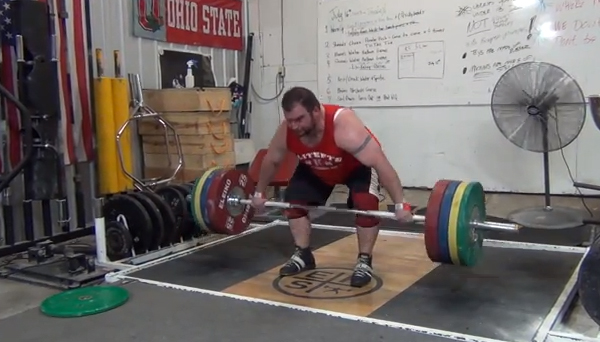
Using static holds: mid-rep, multi-positional pausing to benefit the athlete and coach
Olympic lifts can be very complex and have a high rate-of-force with proper execution. Pausing the barbell at strategic points of the Olympic lifts can give the athlete immediate feedback and allow the coach to make mid-rep corrections; two aspects that are extremely difficult to accomplish for most athletes and coaches without an isometric hold. Holding a static contraction at these positions will assist the athlete in achieving the correct bio-mechanical positions and allow coaches to evaluate and give coaching cues that may not be possible otherwise.
Advantages for coaches and athletes
- The coach can more easily establish coaching cues by helping the athletes identify buzzwords during the repetition.
- Coaches can see incorrect positions and correct them before the completion of the rep. It is difficult for most coaches to see technique flaws at full speed. This is the same for coaches who make corrections to sprinters while they are sprinting. This is difficult for most coaches without video analysis.
- Athletes can receive immediate feedback by holding a certain position at critical times of the lift. Common mistakes like having shoulders behind the bar, pushing through the toes, catching the bar with the feet wide, etc., are extremely difficult to do if the athlete has to hold that position. The athlete can make the adjustments and “fix” themselves if they have to hold that position for two-five seconds.
- Increased time-under-tension can be accomplished at specific pulling and catching positions to further develop strength, flexibility, and hypertrophy by extending the set.
Power hang snatch and hang cleans
- Pause above the knee (power position)
- Pause at the catch position
In this video, Denison University head athletic trainer Derek Fry demonstrates a hang power clean with a pause at the power position (above knee) and at the catch position. Additionally, having the athlete pause at the pocket position or perform a paused front squat can also benefit the learning curve.
HALTING SNATCH AND CLEANS FROM THE FLOOR
- Pause Below the Knee
- Pause at the Catch Position (not shown)
In this video, Penn State University assistant strength & conditioning coach Cam Davidson clinics on the proper positioning and execution of a halting snatch where the lifter pauses below knee from after lifting the bar from the floor. Coach Davidson also goes through some coaching points and common mistakes.
Split jerk, push jerk, or push press with a pause
- Pause at the power position (dip)
- Pause at the catch position (lock out)
In this video, University of Arkansas assistant strength & conditioning coach Jordan Jacobs demonstrates a barbell split jerk with a pause at the power position and at the catch position to further accentuate the proper posture and mental cues.
Using multiple pauses at more than two positions
In most instances, it is advisable to incorporate two pauses with each lift. Where you coach your athletes to execute these specific isometric contraction depends on technique discrepancies, weak points, individual needs, and specific progressions within a training cycle. This is not to say that more than two pauses cannot be implemented, especially early in a training cycle. Below is another video of Cam Davidson demonstrating the 5-position German snatch.








